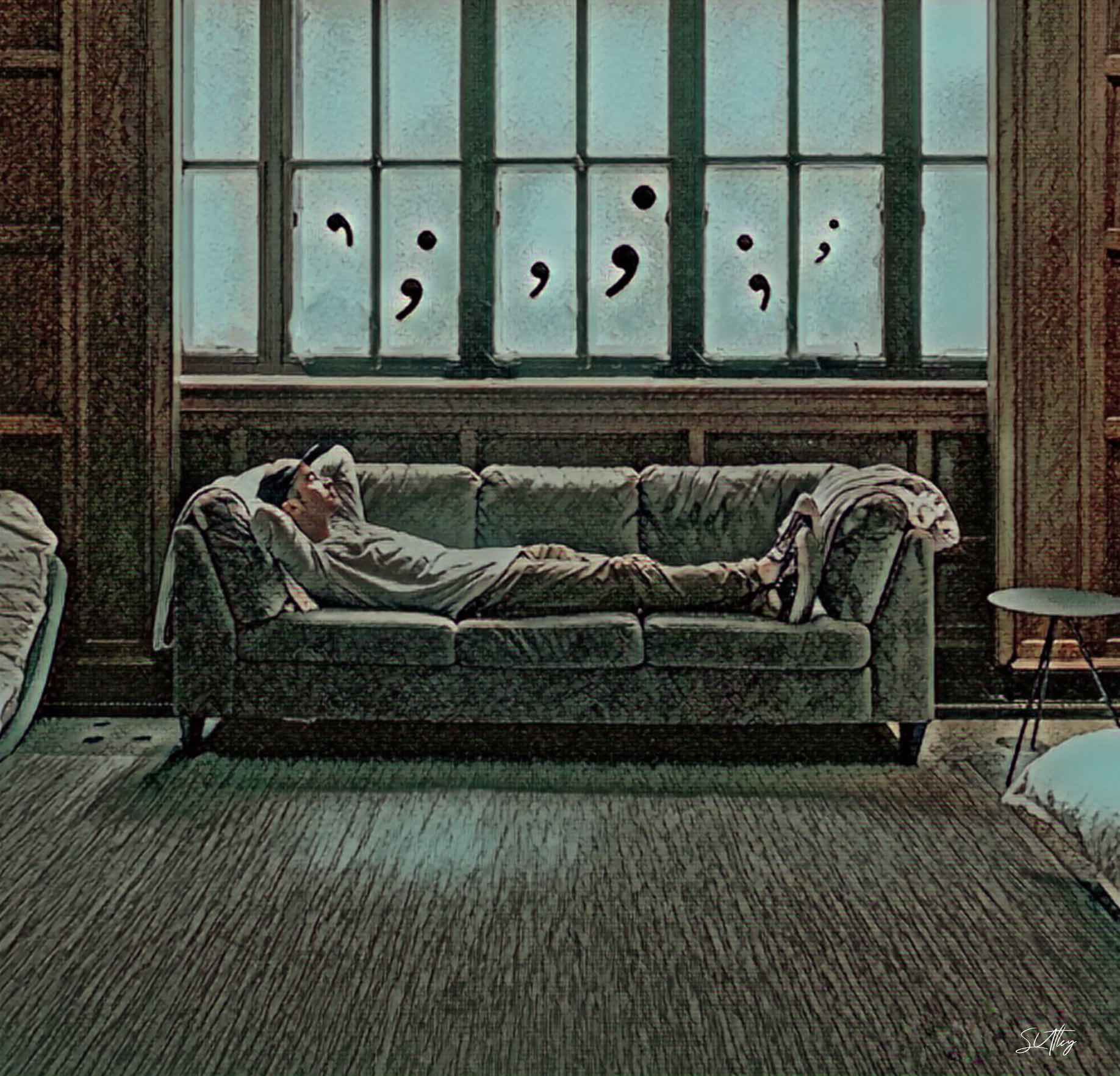Anatomy of the Aphorism
by Meghan Trask Smith
You snooze, you lose. My father’s favorite.
Said almost daily. Though this “sentence”
is actually syncopated into a clumsy
comma splice, there is lovely parallel structure
with two present indicative verbs,
second person singular or plural
depending on how precise the cut
of the sentence should feel:
whether one, two or all of three
of us children were lackluster slackers.
Examine it with the precision
my father used on our backpacks
when we got home from school,
probing for whether we had
eaten our lunches, done our work
or were lying about having
finished either or both.
You lose, you snooze.
Same clausal make-up,
A mirror image,
yet, here we seem to have arrived
in the guts of depression,
reactionary inertia and inaction. Genius,
the way my father used our living room
couch as bed, folding his long legs into a
subtracted version of himself after dinner
until he was just a
body breathing or breathing body.
In any case, to correct the grammar
of the aphorism feels like too much meddling.
The rescue of the semicolon
would feel wrong,
so much division in the sentiment.
Forward or backward, the problem is the same:
No if, no then.
No clear syntactical glue to assign
the cause and the effect.
If it were one or the other
when my father left
then I’d know whether I’d lost him
or merely fallen asleep.


ABOUT THE AUTHOR
Meghan Trask Smith teaches English at a boarding school in Massachusetts, where she lives with her cartoonist husband, boundless children, and a very fuzzy dog. She shows up to writing each day with the hope that the Muse will visit. She holds an MFA from Vermont College of Fine Arts and has work featured in The American Journal of Poetry, Nonbinary Review, Mom Egg Review, FWWR, and Snapdragon: A Journal of Art & Healing.
Share this Post

